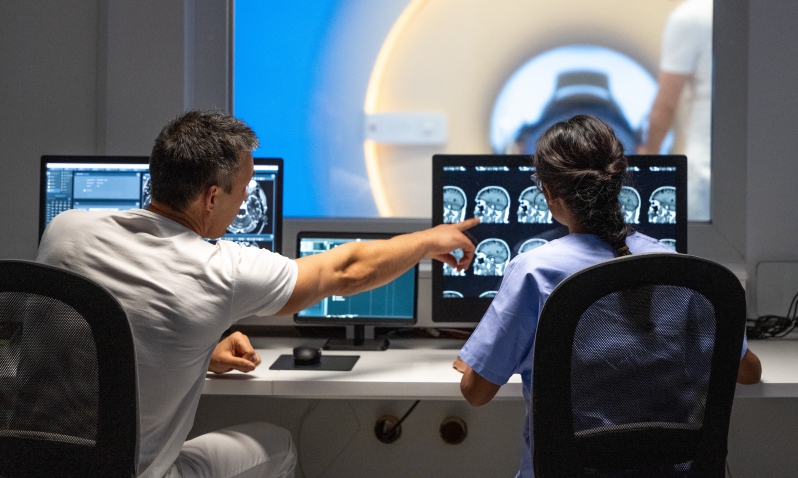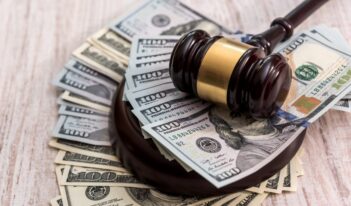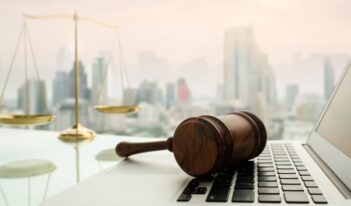
Neuroscientific evidence in the courtroom may test judges and standards of admissibility.
As the United States continues to bear witness to high-profile episodes of police violence, many have wondered: What was that officer thinking?
Although it might seem as if we can never know for sure, neuroscience has already entered criminal courtrooms, with some lawyers extolling the discipline’s ability to peer into the subconscious. According to its proponents, neuroscientific evidence has the potential to promote just outcomes by making it easier to determine whether someone is lying.
Skeptics argue that neuroscientific evidence presents a host of concerns, including privacy and due process rights. Many neuroscientists point to a more basic issue.
Despite advances in understanding the human brain, neuroscience has yet to decipher the workings of mind. Technologies exist that produce accurate inferences about what someone is thinking. But devices that can actually read intentions and memories—devices that could probe a violent police officer’s mind—are still the stuff of science fiction. For now, it largely remains up to judges to regulate what kinds of neuroscientific evidence make it into court.
The most common kind of neuroscientific evidence—sometimes called neurobiological evidence—is information about a defendant’s brain health and function. This information usually takes the form of brain scans, neuropsychological tests, or medical history records. A physician or other expert can testify that a particular scan, test, or record indicates that a defendant is physically unable to form the requisite intent for the charged offense or as mitigating evidence at sentencing.
The connection between neurobiological evidence and the ultimate issue of a defendant’s mental state raises difficult questions. For example, even though a brain scan may be able to show, with high accuracy, that a certain defendant has significant brain damage, does this mean that the defendant is legally insane? The answer may depend on the location and extent of the brain damage, but it will also depend on how the judge construes the definition of legal insanity. Can the legal concept of recklessness be matched with a specific pattern of brain activity? Should neuropsychological tests influence determinations of a teenager’s culpability?
“Forensic neuroscience” may present even thornier questions. This variety of neuroscientific evidence derives from EEG-based technologies which measure specific brain signals associated with memory recognition to detect—at least in theory—whether a suspect has hidden knowledge of a crime. After decades on the fringe of neuroscience, brain fingerprinting may be poised to attain mainstream status in the near future.
It is largely up to trial judges to untangle these questions about the proper role of neuroscience in the courtroom. In the United States, the Federal Rules of Evidence and their state law counterparts regulate kinds of information that lawyers can introduce at trial. Expert testimony, such as neuroscientific evidence, is further governed by standards derived from two U.S. Supreme Court cases: Daubert v. Merrell Dow Pharmaceuticals and Frye v. United States. Both standards serve as guidelines for weeding out unreliable scientific, technical, or otherwise specialized evidence.
The Daubert standard obliges judges to look at factors such as whether the method or theory used to generate the evidence has been tested, whether there is published peer-reviewed work about it, its error rate, whether there are any standards of operation, and whether it is generally accepted in the relevant field. Federal courts and many states use the Daubert standard.
Some states retain the older Frye standard, which simply requires judges to determine whether the method or theory is generally accepted in the relevant field. Of course, judges must also determine whether experts are qualified and whether their information is helpful to the trier of fact.
Many kinds of neurobiological evidence—scans, tests, and medical records—have a good chance of satisfying the Daubert test. They are well-validated, the subject of peer-reviewed work, tend to have low error rates, and have extensive and detailed standards of operation. Even brain fingerprinting may stand a chance; one U.S. court has already admitted it as evidence in a criminal case.
Yet Daubert, Frye, and related evidence rules have failed to catch faulty scientific evidence. In 2009, the National Academy of Sciences released a report calling for a reevaluation of commonly admitted forensic techniques, such as bite mark and fingerprint analyses. Despite widespread belief in their reliability, the Academy report indicated that few had solid scientific foundations. Indeed, over a hundred people convicted on the basis of these unreliable techniques have been exonerated.
Since the report’s publication, various states and organizations have taken steps to remedy the use of bad science in criminal cases. Under Daubert and Frye, however, trial judges remain the final arbiters of what constitutes acceptable expert testimony. The Supreme Court has clarified that appellate courts should review decisions on the admissibility of expert testimony for abuse of discretion—a low bar to clear.
Most neuroscientific evidence does rest on solid scientific foundations. And some studies have found that jurors, once thought to be easily swayed by the mere hint of science, may not find information about a defendant’s brain especially persuasive.
Since “neurolaw” is still an infant field, little empirical research exists on the potential limits and risks of putting brains on the witness stand for experts (and judges) to draw upon. Even if the science itself is not faulty, lawyers may call experts who overstate what that science can prove or frame a hotly debated opinion as the field’s consensus.
These issues may not be unique to neuroscientific evidence. Toxic tort litigation, for example, is often a “battle of the experts.” Nevertheless, neuroscientific evidence carries distinctive risks. Being able to uncover that police officer’s memories—or those of a robbery witness, or a teenage defendant—could be the difference between “guilty” and “not guilty.” That is a lot of stress to put on judges’ brains.



